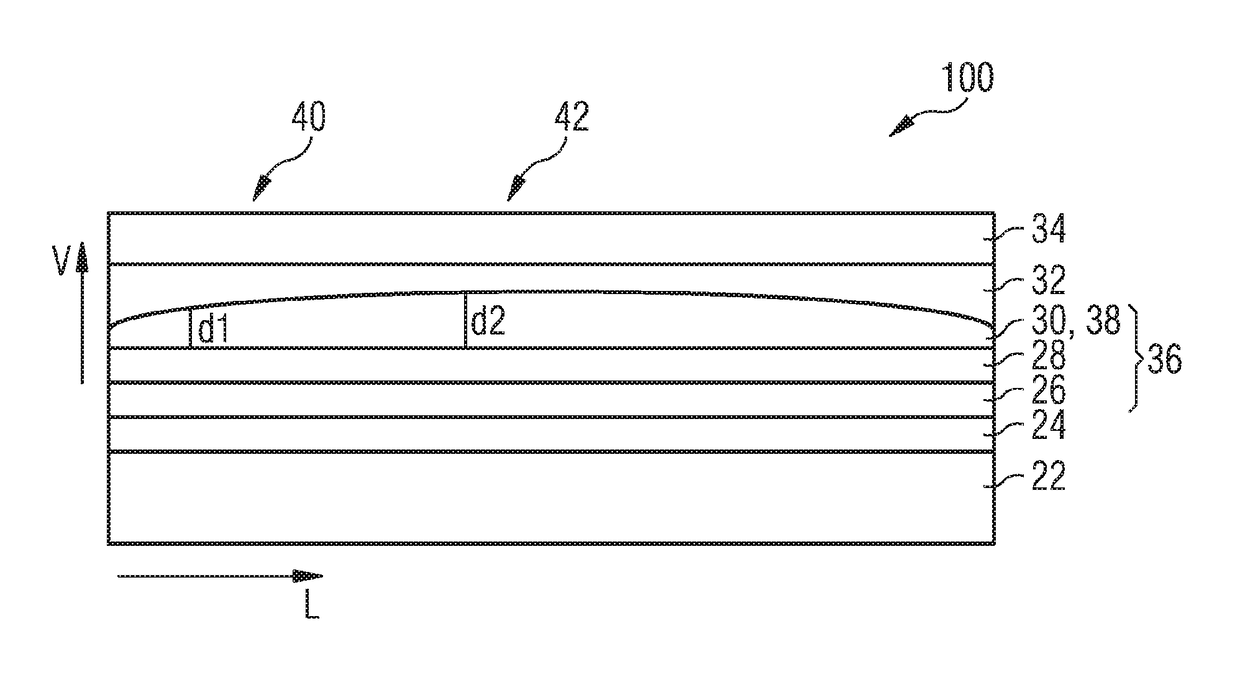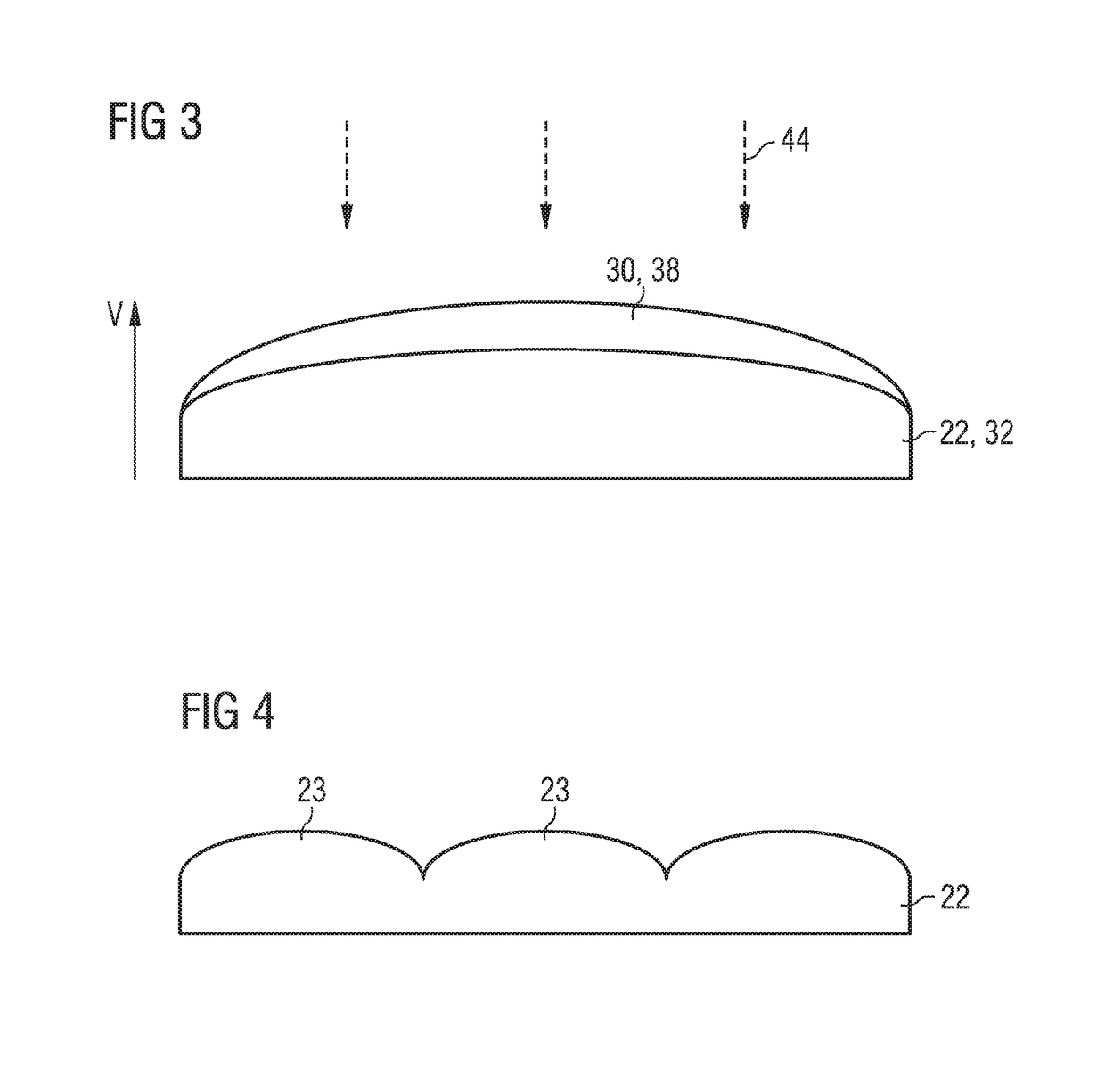Organic Light-Emitting Device
a light-emitting device and organic technology, applied in the field of organic light-emitting devices, can solve the problems of unsatisfactory reduction of color rendering index (cri), increase in required operating voltage, and special manufacturing, and achieve the effect of avoiding scattering of light at any edge or step of inhomogeneity layer, facilitating extensive radiation of light generated in at least one organic light-emitting layer, and softer transitions
- Summary
- Abstract
- Description
- Claims
- Application Information
AI Technical Summary
Benefits of technology
Problems solved by technology
Method used
Image
Examples
Embodiment Construction
[0054]To understand the effect of the inhomogeneity layer provided according to the invention, the influence of the layer thickness of one of the layers arranged in the layer stack of an OLED, in this case the electron transport layer (ETL), on the light radiated by the device is shown in FIG. 1. The results of a simulation are shown in which an intensity of the light radiated by a device was calculated as a function of the emitted wavelength, wherein the device has an electron transport layer of a constant thickness.
[0055]The curve designated 10 represents the intensity curve in a device with an 80 nm thick electron transport layer. By comparison with this, the curve 12 represents the intensity curve in the case of an otherwise identically constructed device in which the thickness of the electron transport layer is 50 nm. It is clear that the two curves 10, 12 have maxima and minima at different wavelengths, wherein the maxima also exhibit different widths. In addition, in FIG. 1 t...
PUM
 Login to View More
Login to View More Abstract
Description
Claims
Application Information
 Login to View More
Login to View More - R&D
- Intellectual Property
- Life Sciences
- Materials
- Tech Scout
- Unparalleled Data Quality
- Higher Quality Content
- 60% Fewer Hallucinations
Browse by: Latest US Patents, China's latest patents, Technical Efficacy Thesaurus, Application Domain, Technology Topic, Popular Technical Reports.
© 2025 PatSnap. All rights reserved.Legal|Privacy policy|Modern Slavery Act Transparency Statement|Sitemap|About US| Contact US: help@patsnap.com



